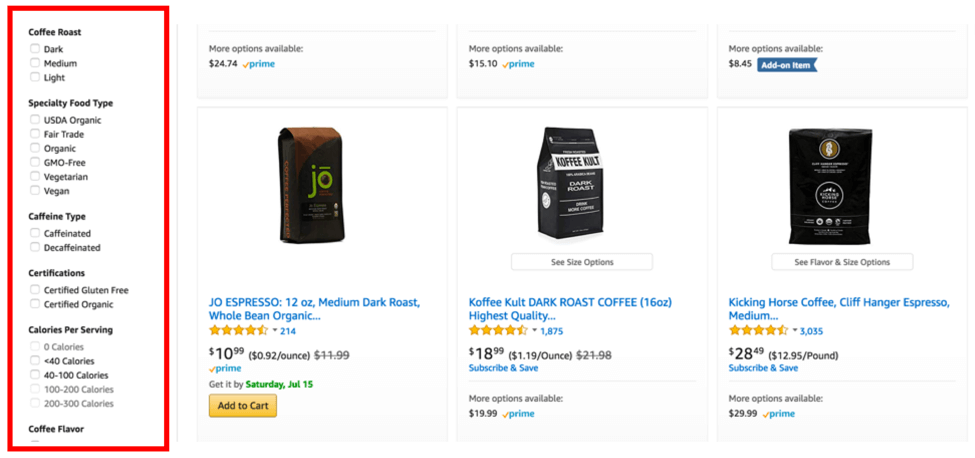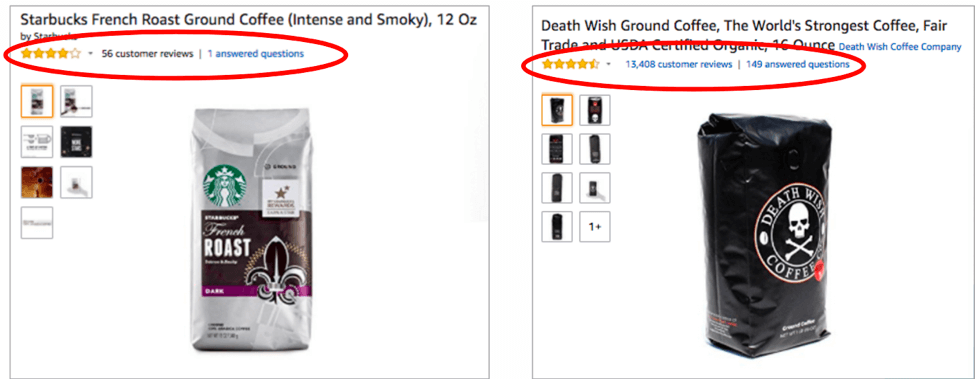Winning strategies for product pages: Improving findability and buyability
- Fahad H

- Jul 19, 2017
- 3 min read
What spurs you, as a consumer, to buy one product over another? The brand? The price?
While different needs dictate the kind of product you’re looking for — a basic vs. a deluxe coffee maker, for instance — the information you’ll use to make your decision is increasingly found in two places: Amazon and Google.
As you prep for the upcoming holiday season, it’s important to consider that a hefty majority (87 percent) of consumers begin their shopping using one of them, according to a recent study commissioned by my employer, Salsify (registration required).
Numbers aside, product searches in general are often the first interaction consumers have with your product.

Search has an outsized role in influencing the final purchase decision. Brands need to focus their efforts on the (for lack of better terms) findability and buyability of their products, to maximize their effectiveness selling online.
Findability
Product findability is how often your product ranks high in search results for your category, and it relates directly to the content of each product listing.
Being found on Amazon is particularly important.. Only 4 percent of consumers who start by searching on Amazon will end up buying somewhere else, while 38 percent who start a search on Google will buy from a different retailer, according to the same Salsify survey.
A few overarching tips are below, and it’s also worth checking out this great worksheet from Bain & Company that gets at more granular considerations.
Tip #1: Get exhaustive on the basics
If the shopper can’t find your product with basic information, it may be that the search or filter feature algorithms on a key retailer’s site are not finding the correct information in the first place.
Develop a process for getting new products to market, as well as a system for regularly refreshing content with an update schedule to ensure it’s accurate.
This includes ensuring that product features are correctly categorized to support accurate filtering for oven type, price, warranty, Prime and so forth — the array of descriptive information retailers use to categorize products within larger segments, as seen below.
Keeping all these elements updated and comprehensive increases your product’s chances of topping the list of general search results across a category (e.g., coffee).

Tip #2: Build your search strategy from what you know
Take a close look at your site’s most frequently used SEM, SEO and internal site search terms. This information is an excellent indication of what consumers want at the beginning of the shopping journey.
Additionally, much like the SEO impact of backlinks, linking product promotions to Amazon or other key retailer product pages increases search relevance and improves SERP position.
Proper execution here is why smaller brands can often dominate Amazon or Walmart SERPs at the expense of larger competitors. For a short-term boost, experiment with competitive and contextual placements of Amazon Marketing Services (AMS) ads to increase product findability.
Buyability
Buyability is best defined by asking, “Are my products merchandised according to best practices, and in a way that’s effectively driving conversions?”
At a core level, you want shoppers to stay on your product page. The more time they spend looking at images or videos, getting a better feel for the product benefits through your copy and reading reviews, the more likely they are to convert.
Proper execution here starts a positive feedback loop — you start to convert more browsers to customers, and more people review your products, increasing your SERP position, which helps grow your sales.
Tip #1: Always use bullets as marketing copy — not a dry listing of product features
Resist the urge to simply list features of your product in the bullets and text copy. Your copy is a critical means of outlining your value proposition and driving conversion.
For example, instead of “Stainless steel body, knobs and handles” to describe a toaster, emphasize the value with something like “Fingerprint-free silver finish keeps kitchen countertops looking clean.”
While this may seem like common sense, you’d be amazed how often basic marketing gets ignored across a full product catalog in the name of “expediency,” despite its clear impact on sales.
Tip #2: Employ every trick in the book to boost your review numbers and keep customers engaged
Every major retailer algorithm uses the quality and number of reviews as key metrics for how a product places within a larger category.
This is another way smaller brands can outflank larger ones on places like Amazon, as seen below.

A few tactics to test in boosting your review numbers include using product package inserts to invite customers to participate in ratings and reviews, or reminding your audience on social media to do the same (e.g., “Help us out!”).
Above all, continually act with the mindset of product content being a marketing asset to manage, and an opportunity rise above your competitors — in terms of findability (SERP rank) and buyability (stickiness and sales).
With consumers increasingly basing their buying decisions not on what they see on physical store shelves but on what they learn from a Google search or Amazon product page, your marketing priorities should shift in kind.








Comments